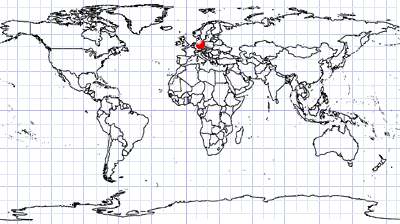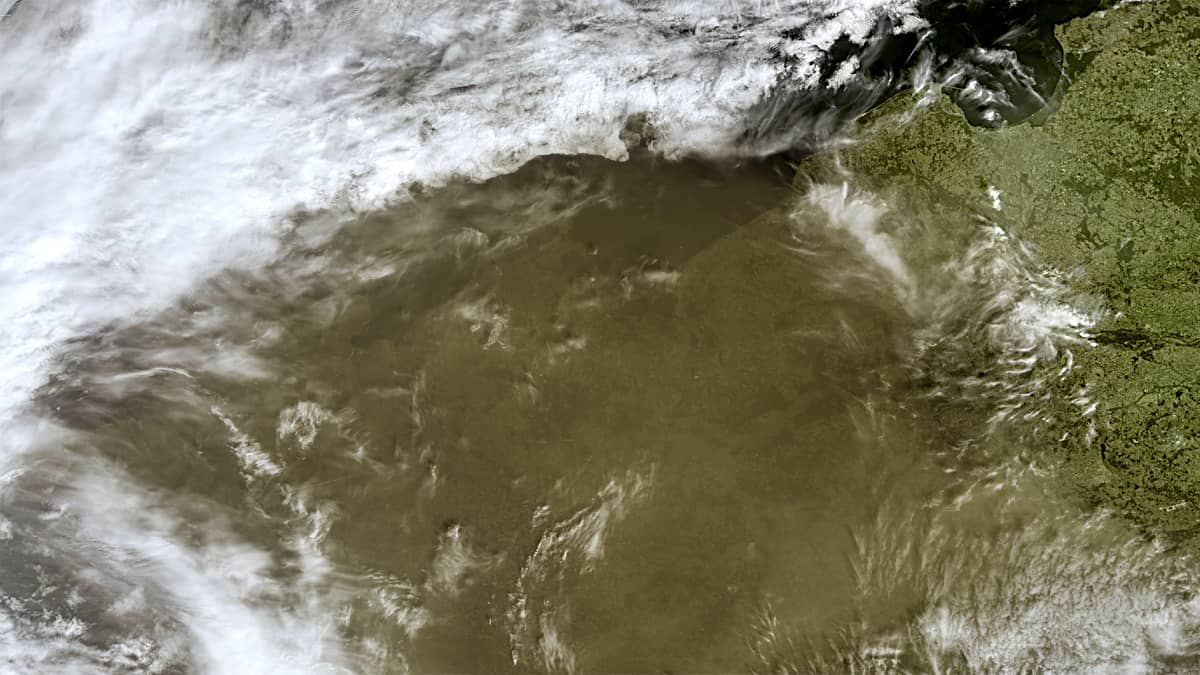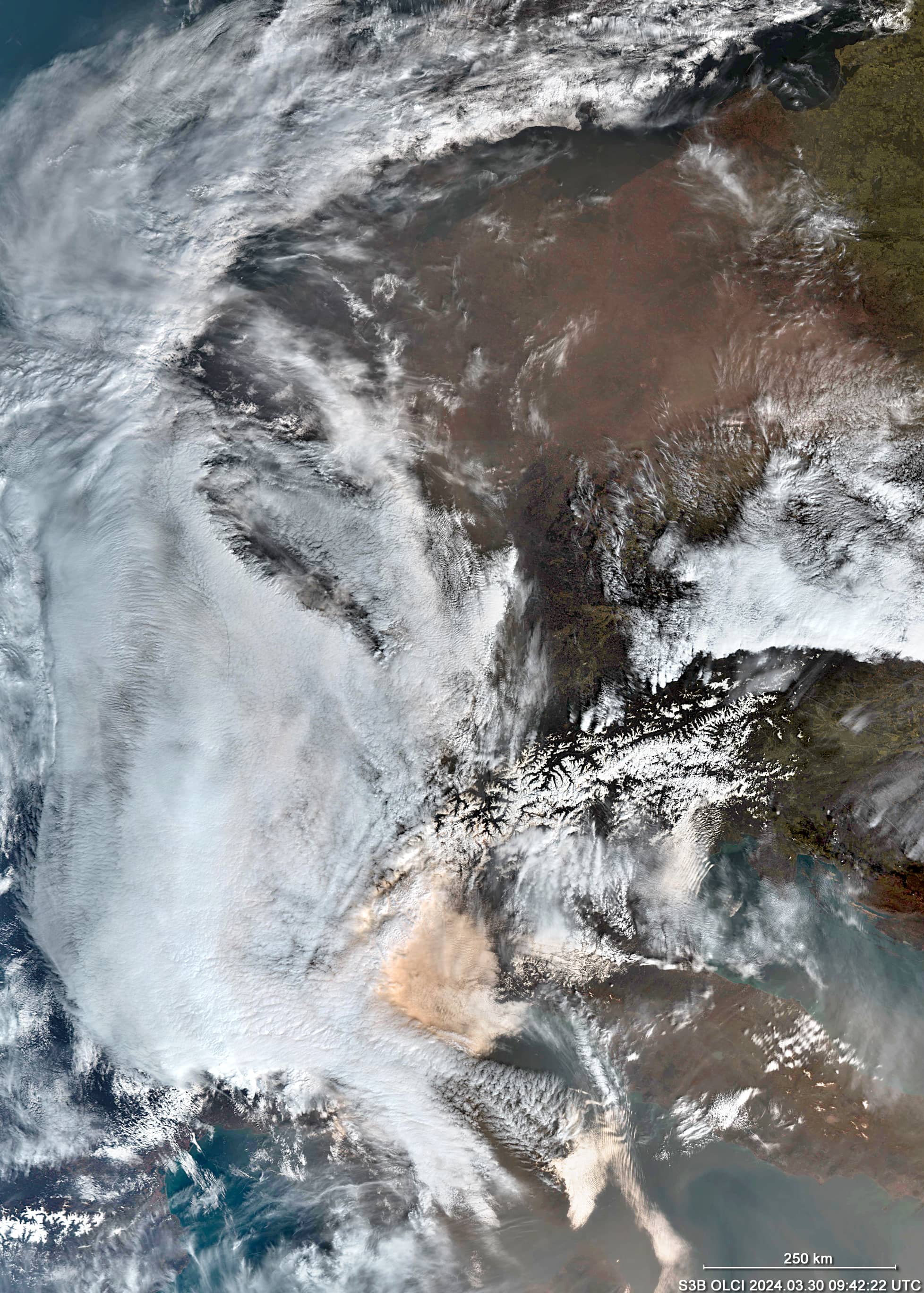
Sahara Dust over Europe
Central Europe
Date of acquisition: March 30th, 2024 | 09:45:22 UTC
Sensor: Sentinel-3B OLCI, Sentinel-5P AER_AI
Coordinates: ca. 52°N, 14°E
Dust storms originate in North Africa. Dust events in Europe are caused by strong southerly/southwesterly air currents in the run-up to air fronts in Mediterranean low-pressure systems. These strong winds transport dust from the Western Sahara, which borders the Atlas Mountains. The dust reaches heights of up to 5 kilometers and usually takes from two days to a week to reach central Europe. These phenomena occur more frequently in spring.
Desert sand is made up of tiny mineral dust particles, averaging only five to ten micrometers in size. When aerosol clouds spread over large distances, the particle size is typically between 1 and 5 micrometers.
Although such dust particles reach Europe about 5 to 15 times a year, they are rarely found in the concentrations observed this March. On March 30–31, for example, dust particle concentrations of around 190-210 µg/m³ were measured in the air over Bavaria, Austria and Switzerland (Figure 1). Elevated aerosol levels were also observed in the Czech Republic, Poland, Belarus and Ukraine. On the 1st of April, aerosol levels reached up to 510 µg/m³ in Italy and up to 380 µg/m³ in the Balkan states, Romania and over the Black Sea. On the 2nd of April, levels of up to 260 µg/m³ were recorded in Romania and western Ukraine (Figure 2).
At concentrations above 100 µg/m³, desert dust can be harmful to human health.
Typically, Saharan dust consists of about 90% by weight of aluminosilicates (e.g., clay, kaolinite and montmorillonite), iron oxides (hematite, goetite), quartz and fossil algae. The remaining less than 10% consists mainly of calcite and gypsum.
Sahara dust can play an important role in plant fertilisation due to its high levels of nutrients such as calcium and magnesium.




